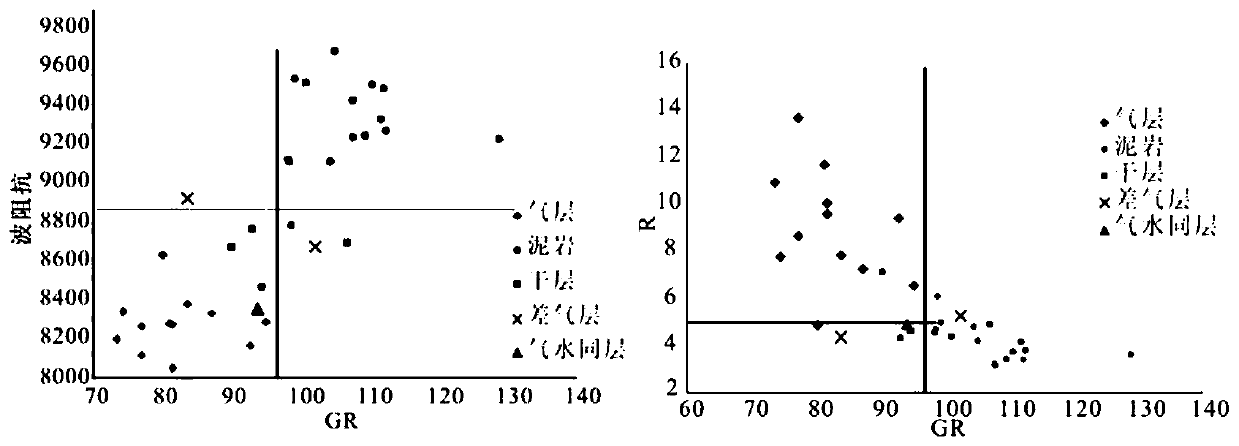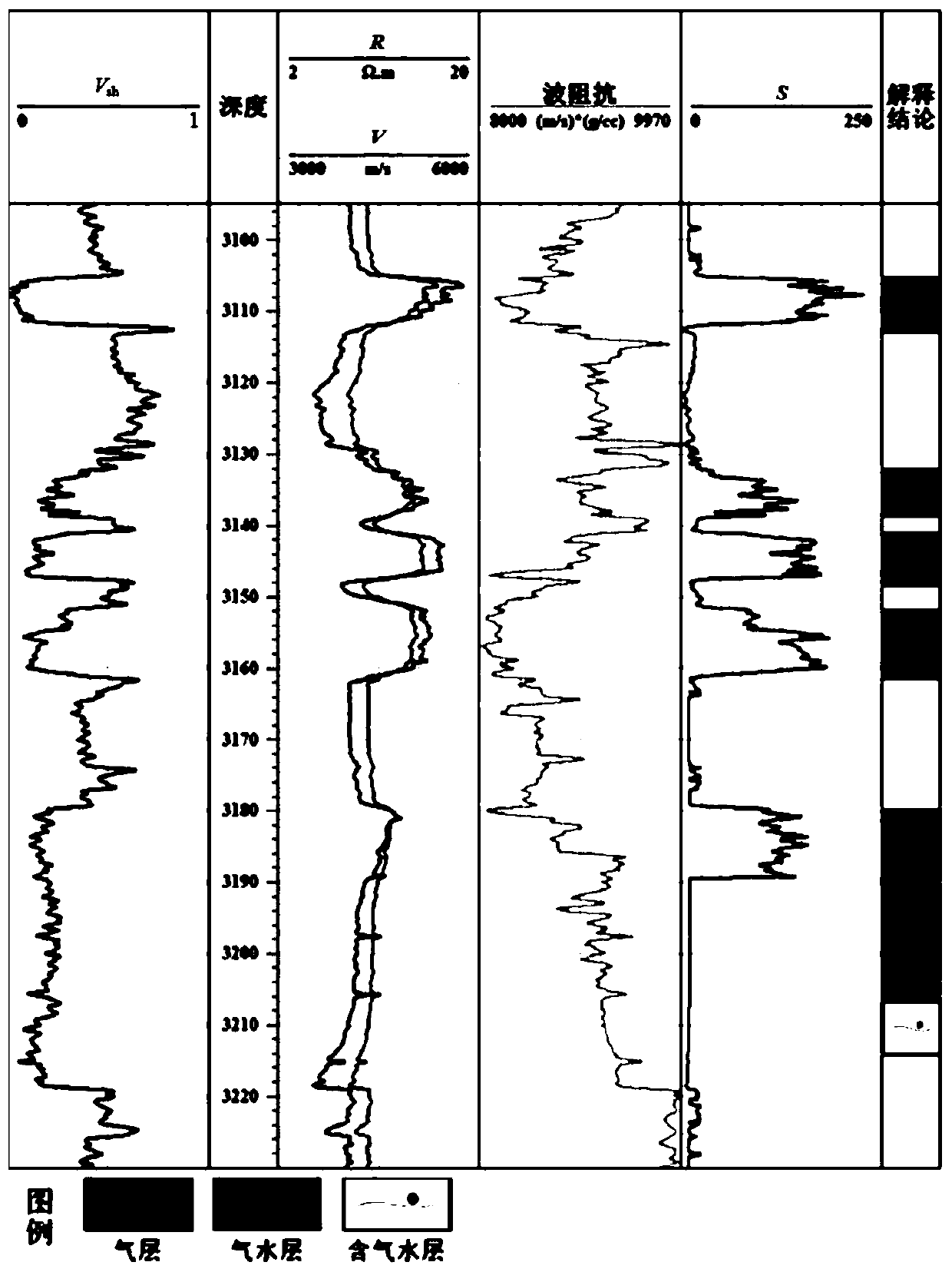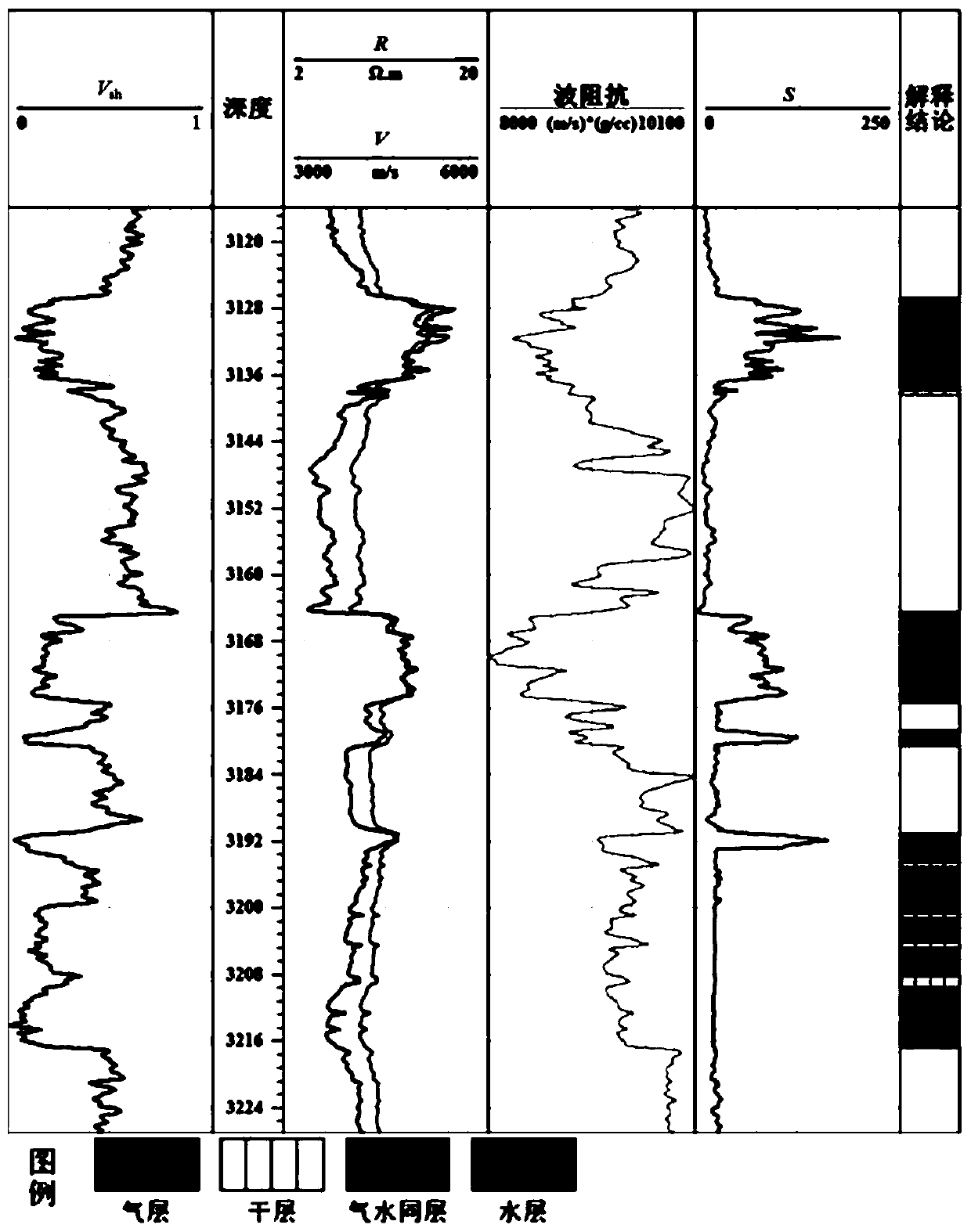A method for reconstructing gas-bearing sensitivity curves of high-temperature and high-pressure gas reservoirs
A sensitive curve, high-pressure gas technology, applied in seismology, instruments, measurement devices, etc., can solve the problems of inability to effectively predict gas-bearing reservoirs, distinguish between difficult gas layers and non-gas layers, and achieve important application prospects and economic Value, improve quality, ensure the effect of precision
- Summary
- Abstract
- Description
- Claims
- Application Information
AI Technical Summary
Problems solved by technology
Method used
Image
Examples
Embodiment 1
[0029] Embodiment 1, with reference to figure 1 , a high-temperature and high-pressure gas reservoir A, a method for reconstructing a gas-bearing sensitivity curve of a high-temperature and high-pressure gas reservoir, comprising the following steps:
[0030] 1) The logging curve environment correction is performed first, and then the abnormal value of the logging curve is eliminated to obtain a standardized logging curve;
[0031] 2) Under the premise of standardized logging curves, carry out petrophysical analysis on high-temperature and high-pressure gas reservoirs, and obtain gas layer sensitive parameters of high-temperature and high-pressure gas reservoirs. Gas layer sensitive parameters include resistivity R curve and natural gamma ray GR curve;
[0032] 3) Since the resistivity is not directly related to the seismic amplitude, but the seismic amplitude is closely related to the difference in wave impedance (the product of velocity and density) of the formation above an...
Embodiment 2
[0046] Embodiment 2, with reference to Figure 5 , a high-temperature and high-pressure B gas reservoir, a method for reconstructing a gas-bearing sensitivity curve of a high-temperature and high-pressure gas reservoir, comprising the following steps:
[0047] 1) The logging curve environment correction is performed first, and then the abnormal value of the logging curve is eliminated to obtain a standardized logging curve;
[0048] 2) Under the premise of standardized logging curves, carry out petrophysical analysis on high-temperature and high-pressure gas reservoirs, and obtain gas layer sensitive parameters of high-temperature and high-pressure gas reservoirs. Gas layer sensitive parameters include resistivity R curve and natural gamma ray GR curve;
[0049] 3) Since the resistivity is not directly related to the seismic amplitude, but the seismic amplitude is closely related to the difference in wave impedance (the product of velocity and density) of the formation above a...
PUM
 Login to View More
Login to View More Abstract
Description
Claims
Application Information
 Login to View More
Login to View More - R&D
- Intellectual Property
- Life Sciences
- Materials
- Tech Scout
- Unparalleled Data Quality
- Higher Quality Content
- 60% Fewer Hallucinations
Browse by: Latest US Patents, China's latest patents, Technical Efficacy Thesaurus, Application Domain, Technology Topic, Popular Technical Reports.
© 2025 PatSnap. All rights reserved.Legal|Privacy policy|Modern Slavery Act Transparency Statement|Sitemap|About US| Contact US: help@patsnap.com



